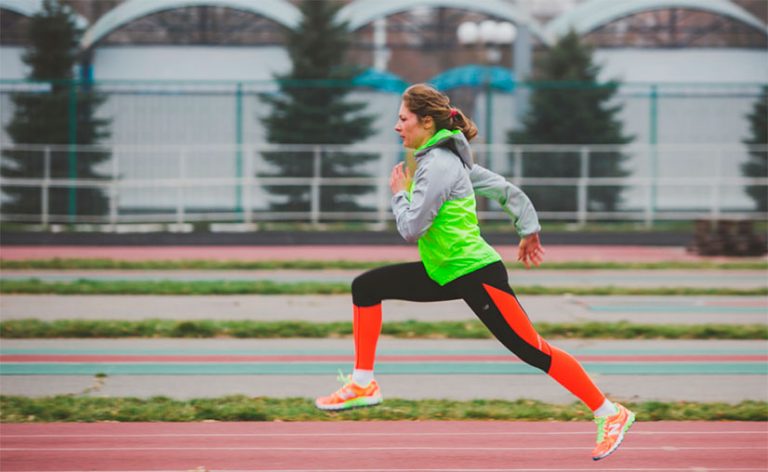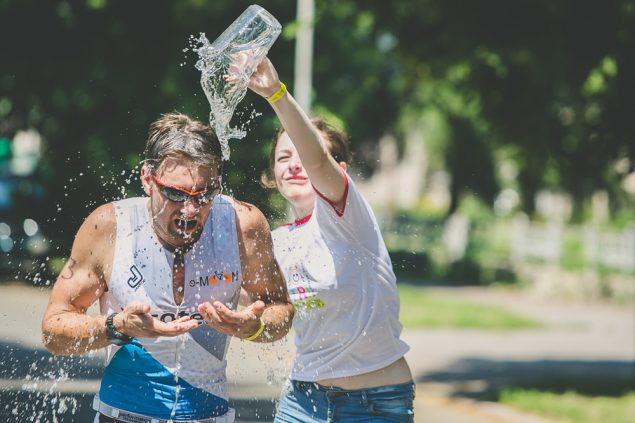Not all athletes like to run in the summer. Of course, training in the spring or fall is more enjoyable: in the 30-degree heat and walking is difficult, let alone training. But the summer season has the main advantage: daylight is longer, so it’s easier to go for a run early in the morning or late in the evening.
Beginner runners are strictly forbidden to run in the heat. It’s really dangerous. So plan everything to shift your workouts to a cool time of day.
Here are some more tips to help you not get screwed when running in the spring and summer season.
Drink well in advance
Thirst occurs when the body is already dehydrated. Therefore, drink a glass of water before training, and during the run take a couple of sips every 20-30 minutes. To always keep water on hand, invented many belts with pockets for flasks – search the Internet, in the summer you will need them for long workouts.
Alcohol and coffee cause dehydration. So refrain from them before jogging.
In addition to water, you can drink isotonics. They contain electrolytes and restore salt balance.
Review your workout time
In summer, it is better to run in the morning (when you still feel cool) and in the evening (when there is still a park, but everything around is already cooling down and running quite easily). So rebuild your day so that you get into one of these “temporary windows”. We wrote about the nuances of training in the morning and evening in a separatearticles…
Start running slowly, and if you feel good after a light warm-up, increase the pace to normal. The fact that running in the peak of heat is forbidden – advice from the collection of Captain Evidence.
The pace of the runner in hot or high humidity drops markedly.
Choose your routes carefully
Here everything is clear: asphalt (especially black), cars and houses absorb the sun’s heat well. Therefore, avoid highways, open to the sun asphalt and concrete paths. If it so happened that you had to run during the day, when the sun burns mercilessly, choose routes where there is a lot of shade (parks, forests) or along the water (lakes, rivers).
If the wind direction is constant, plan the route to finish the run against the wind. A light headwind will refresh at the right time and give you strength.
As little clothing as possible
Running clothes in the summer should be light, “breathable” and quickly remove moisture. Buy synthetic shorts and a T-shirt at a sporting goods store. This is exactly the case when natural fabrics are not suitable – they quickly absorb moisture and do not remove it.
Choose light-colored clothes, not forgetting the headdress. The modern running form (look for the ‘Running’ mark on the label), designed for running in the heat, will not allow the body to overheat, and a light-colored T-shirt will reflect the sun’s rays.
It is not superfluous to apply sunscreen (SPF-30 and above) on the face, shoulders and neck.
Skin protection
The sun, moisture and salt on the body provoke itching and rashes on the skin. The most vulnerable places: armpits, groin, lines along the sports bra in women, nipples in men. Therefore, if the skin is prone to irritation, treat dangerous areas with Vaseline or sports lubricant.
We have prepared detailed material on what to do to avoid the negative effects of running on the skin…
Be patient
Give yourself one or two weeks to adapt to the heat. Increase the load and intensity of training gradually – so your body gets used to the new conditions, gradually lowering your heart rate and body temperature.

How dangerous is the heat
Cramps
Before muscle crampsleads to physical unpreparedness of the body. Removed by massaging problem muscles.
Prevention: carry out a slow warm-up, smoothly increase training loads…
Loss of consciousness
Stopping too abruptly while running in the heat can cause a blood supply to the head and brain. As a result, dizziness and even loss of consciousness are possible. If you feel unwell immediately after jogging, lie down, lift your legs and rest.
Prevention: do a hitch after each workout – at least 5 minutes of light jogging.
Exhaustion
Severe dehydration can cause severe physical exhaustion. Main symptoms: fever, headache, fatigue, profuse sweating, nausea. At exhaustion it is necessary to restore water-salt balance, to put a cold compress on a head and a neck.
Prevention: do not run in the heat, drink water while jogging.
Heatstroke
Excessive physical activity and dehydration impair the body’s ability to maintain optimal body temperature. The main symptoms of heat stroke: temperature 38 ° C or more, headache, nausea, vomiting, increased heart rate, disorientation. A cold compress, rest, drink plenty of fluids can alleviate the condition. In severe cases, medical attention is required.
Prevention: do not run in the heat, drink water while jogging.
Hyponatremia (blood sodium level below normal)
The concentration of sodium in the blood drops when there is too much water in the body. In people whose kidneys do not work properly, the amount of fluid that enters exceeds the kidneys’ ability to excrete excess fluid. Symptoms: drowsiness and confusion, muscle twitching and cramps. Severe hyponatremia is an urgent condition that requires intensive treatment.


